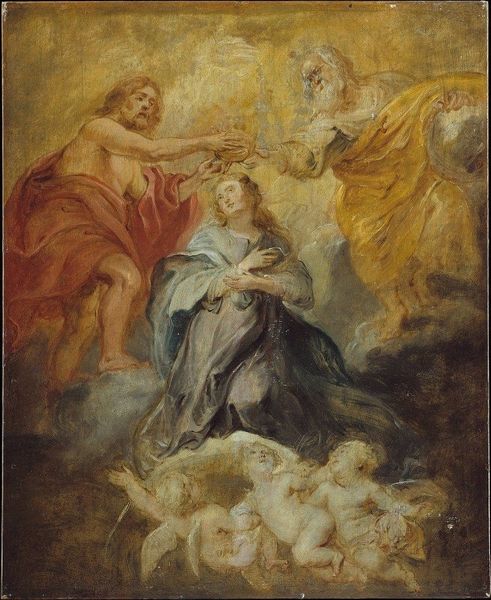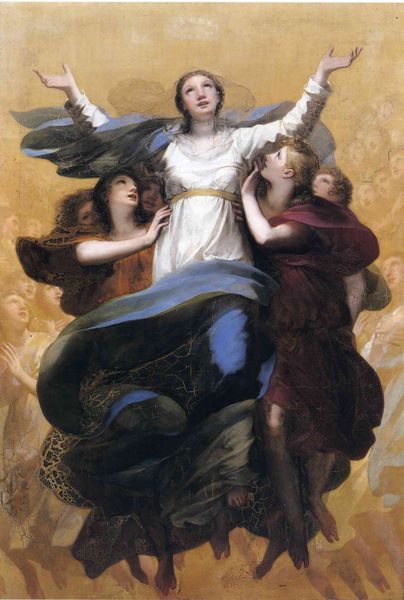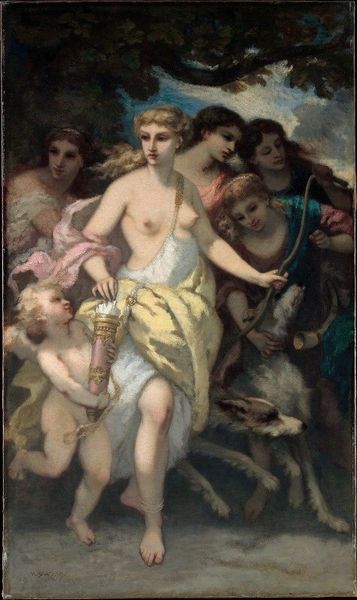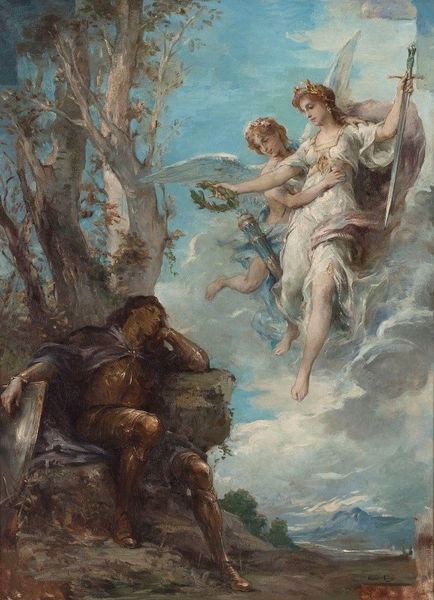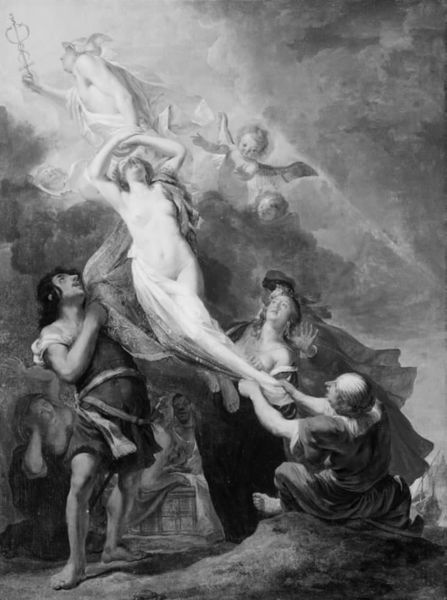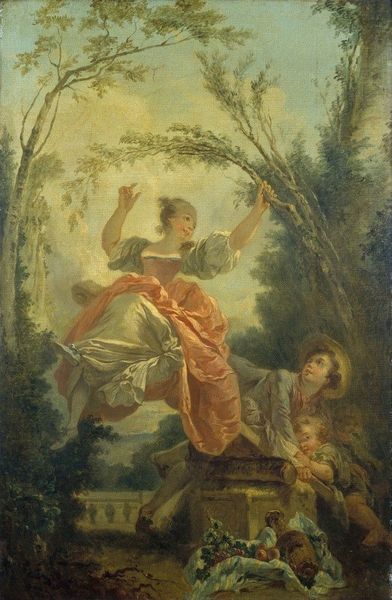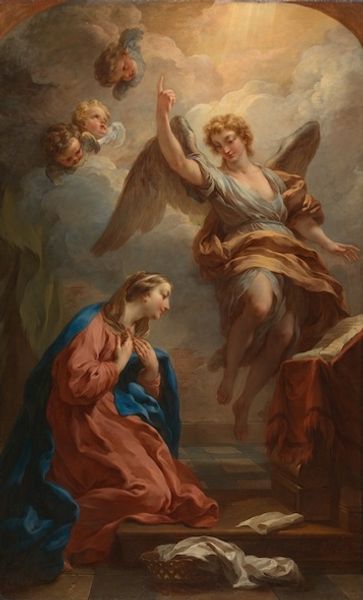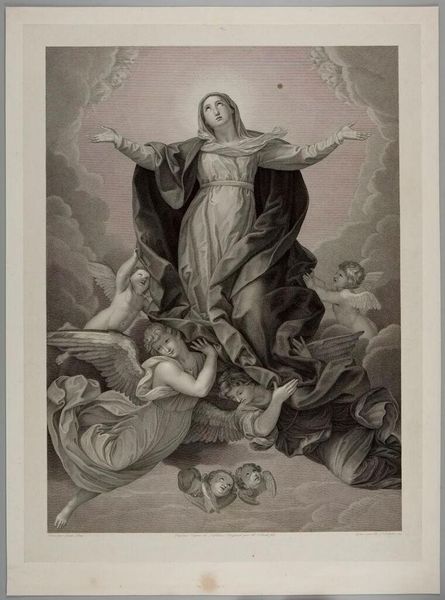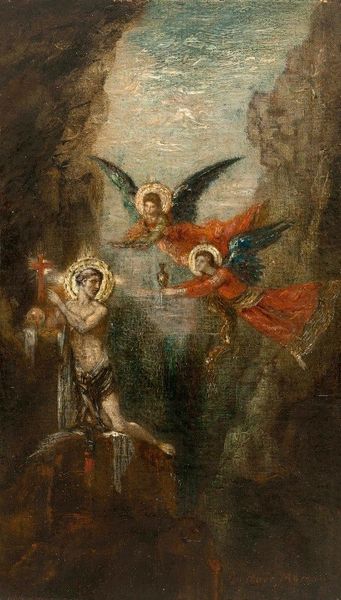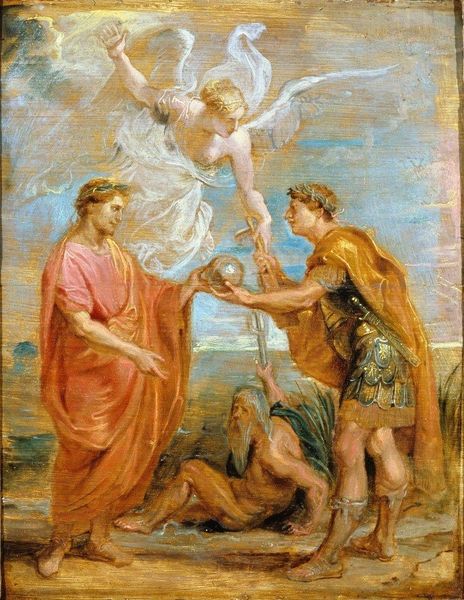
painting, oil-paint
#
portrait
#
painting
#
oil-paint
#
figuration
#
oil painting
#
romanticism
#
history-painting
#
portrait art
Copyright: Public Domain: Artvee
Editor: So here we have Pierre-Paul Prud'hon's "The Assumption of the Virgin," painted between 1816 and 1819, done in oil paint. There’s an undeniable lightness to it; everyone seems weightless and ethereal. What do you see in this piece? Curator: I see a potent articulation of power dynamics, especially in relation to gender and religious ideology. Prud'hon, working within the Romanticism movement, paints a Virgin ascending, but consider the sociopolitical context. Post-French Revolution, the Church was actively reasserting its influence. How might this idealized, hyper-feminine depiction of the Virgin serve as a tool in that project? Editor: That's a fascinating angle. I was only considering the pure aesthetics, the movement. Are you saying this "lightness" has a more manipulative intent? Curator: Precisely! It invites us to reflect on how images are deployed to shape perceptions and normalize certain beliefs. The swirling figures of angels, seemingly offering support, might also be interpreted as circumscribing her agency. Notice how her gaze is directed upward, towards a presumably divine, patriarchal source of power. Is it really 'assumption,' or is she being 'taken'? Editor: So you're suggesting we question the implied submission within the apparent triumph? It’s uncomfortable but makes me think of similar representations of women, particularly in religious art throughout history. Curator: Exactly. By viewing the work through a feminist lens, we unveil the latent narratives about female agency and societal expectations embedded in this supposedly celebratory image. This allows for a more critical engagement, not only with the artwork itself but also with the historical forces that shaped its creation and reception. What does it reveal to us today about enduring power dynamics? Editor: I definitely see that. It really shifts my understanding of the work away from simply admiring its beauty to questioning its message. I won’t be able to look at this type of painting the same way again. Curator: Which is the ultimate aim: To spark critical dialogues, ensuring the relevance of historical artworks in understanding our present realities.
Comments
No comments
Be the first to comment and join the conversation on the ultimate creative platform.
